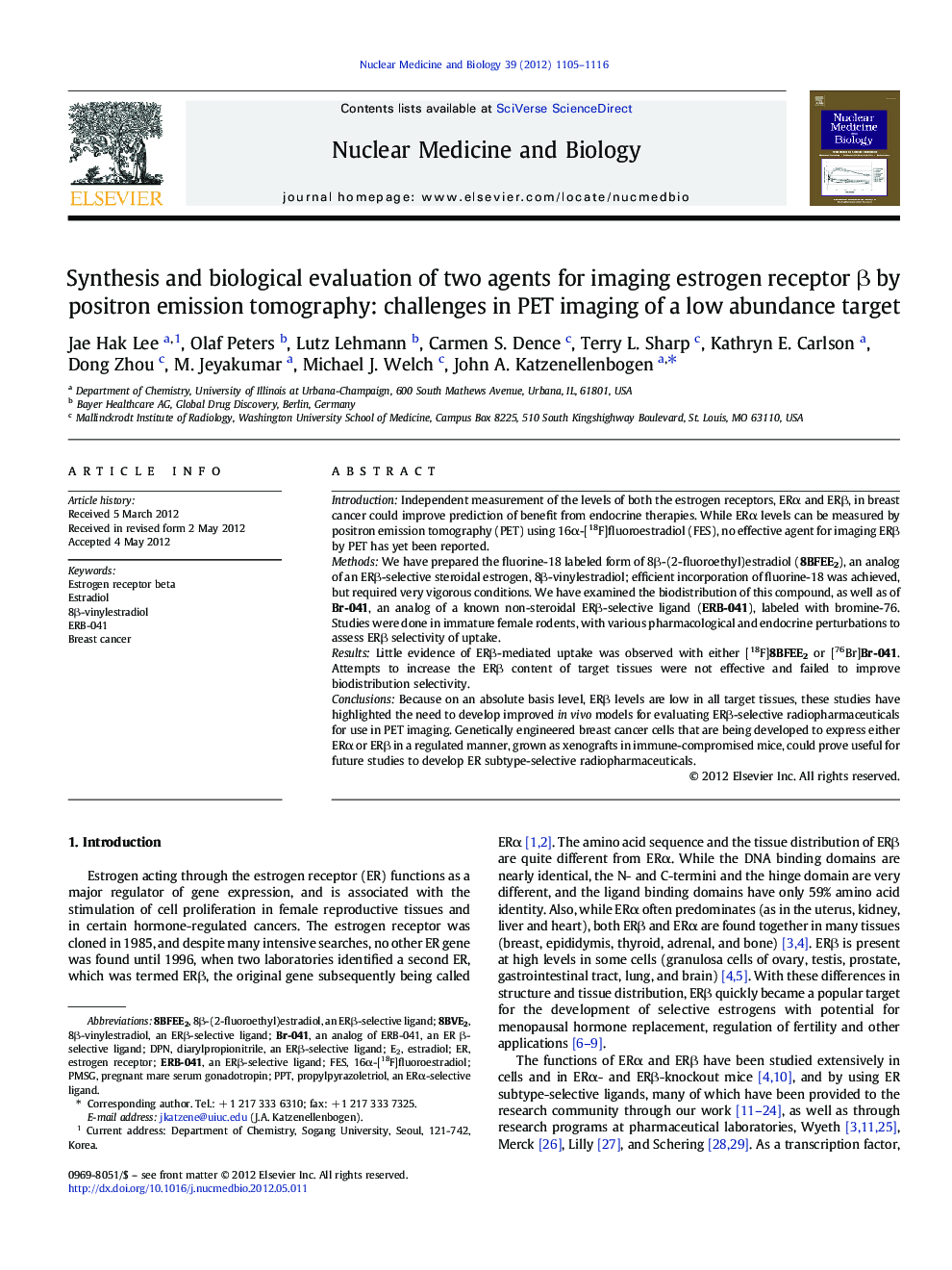| Article ID | Journal | Published Year | Pages | File Type |
|---|---|---|---|---|
| 2153808 | Nuclear Medicine and Biology | 2012 | 12 Pages |
IntroductionIndependent measurement of the levels of both the estrogen receptors, ERα and ERβ, in breast cancer could improve prediction of benefit from endocrine therapies. While ERα levels can be measured by positron emission tomography (PET) using 16α-[18F]fluoroestradiol (FES), no effective agent for imaging ERβ by PET has yet been reported.MethodsWe have prepared the fluorine-18 labeled form of 8β-(2-fluoroethyl)estradiol (8BFEE2), an analog of an ERβ-selective steroidal estrogen, 8β-vinylestradiol; efficient incorporation of fluorine-18 was achieved, but required very vigorous conditions. We have examined the biodistribution of this compound, as well as of Br-041, an analog of a known non-steroidal ERβ-selective ligand (ERB-041), labeled with bromine-76. Studies were done in immature female rodents, with various pharmacological and endocrine perturbations to assess ERβ selectivity of uptake.ResultsLittle evidence of ERβ-mediated uptake was observed with either [18F]8BFEE2 or [76Br]Br-041. Attempts to increase the ERβ content of target tissues were not effective and failed to improve biodistribution selectivity.ConclusionsBecause on an absolute basis level, ERβ levels are low in all target tissues, these studies have highlighted the need to develop improved in vivo models for evaluating ERβ-selective radiopharmaceuticals for use in PET imaging. Genetically engineered breast cancer cells that are being developed to express either ERα or ERβ in a regulated manner, grown as xenografts in immune-compromised mice, could prove useful for future studies to develop ER subtype-selective radiopharmaceuticals.
